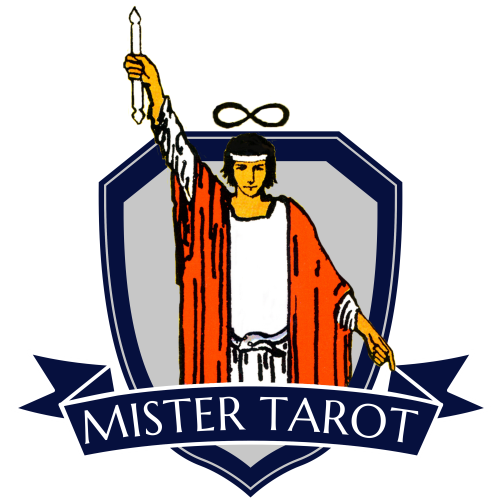 As you look at the image of the Death card, you might instinctively flinch, fearing its ominous connotations. But remember that its purpose is to beckon you to embark on a powerful journey of transformation and renewal.
As you look at the image of the Death card, you might instinctively flinch, fearing its ominous connotations. But remember that its purpose is to beckon you to embark on a powerful journey of transformation and renewal.
The Death card, bearing the number 13, is adorned with symbols of its more profound significance. In historic Tarot decks, you’ll find a skeleton wielding a scythe to remind you that, eventually, all are cut down. In the Rider-Waite-Smith deck, a skeleton rides a white horse to remind you of the scene described in the Revelation of St. John at the end of the New Testament. This imagery might strike fear into the hearts of some, but remember; the Tarot is all about symbols and archetypes, not literal events such as the end of your life or the end of the world.
In essence, the Death card invites you to shed your old skin, to let go of what no longer serves you. This is a theme deeply embedded in the teachings of Joseph Campbell’s ‘The Hero’s Journey’, where the old self must die for the new self to emerge. This universal theme is encountered in many mythologies, from the story of the Phoenix rising from its ashes to the caterpillar transforming into a butterfly.
This card embodies the concept of impermanence, a fundamental truth of life. It teaches that change is inevitable, and your ability to adapt and embrace it is the key to personal growth and transformation. Like Campbell’s heroes who embark on epic quests, you must face the unknown with courage.
The Death card’s association with Scorpio, a zodiac sign known for its intensity and depth, reinforces its transformative nature. It signifies the death of the ego, shedding your old, outdated beliefs and emerging stronger and wiser. This process is akin to the hero’s descent into the abyss—a journey to confront your inner demons, face your fears and emerge with newfound wisdom and strength.
In the Tarot, every card is interconnected. The Death card, for example, can be closely related to the Tower card. Just as the Tower signifies unexpected upheaval, breaking down old structures and laying bare vulnerabilities, the Death card complements this by urging you to accept the destruction of what no longer serves you and to rebuild with newfound wisdom. But whereas the Tower suggest external change, Death is more personal. It means turning inward to something spiritual or psychological that must die for new experiences to be awakened.
In the background of this card, the sun is setting. This symbolises the end of one phase in readiness for the beginning of another, emphasising the transformative nature of the card. As you embrace the symbolism of the Death card, you see the harmonious dance of life’s dualities. Life and death, darkness and light, creation and destruction—it’s all part of the same cosmic cycle that shapes your journey. Through this contrast, you gain a deeper understanding of your existence.
The Death card, in all its haunting beauty, invites you to embrace the hero’s journey of transformation. It urges you to release your fears of change and to welcome the shedding of old, limiting beliefs. You must remember that trials, darkness, and rebirth mark the path to your true self. So, embrace the Death card, and you’ll find the key to your heroic transformation on this incredible journey of life.

